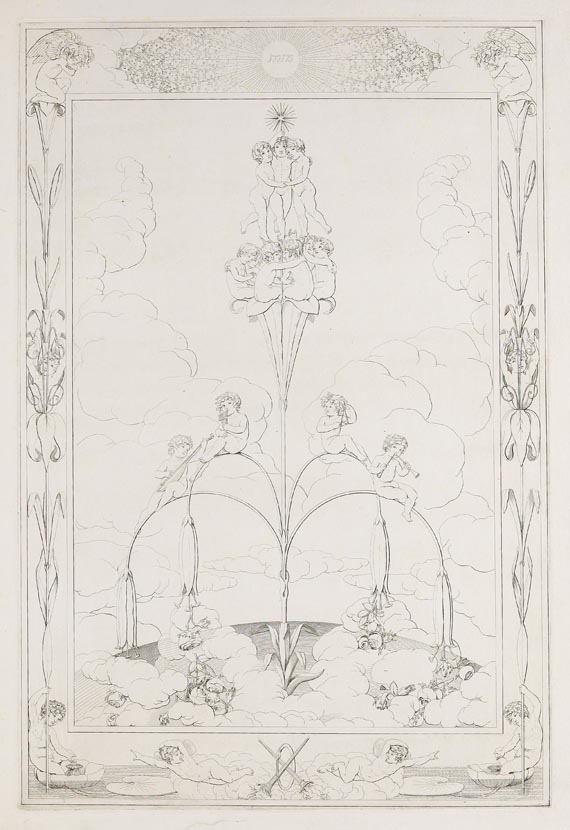Dictionary


Late Romanticism
Late romanticist tendencies in painting can be observed up into the second half of the 19th century. Works by the Dresden painter and graphic artist Adrian Ludwig Richter (1803-84) have two focal points. On the one hand, he is regarded as one of the most important late romanticist landscape painters. His paintings often show groups of figures in idyllic scenes in nature that tell small stories. However, he also created a comprehensive graphic oeuvre, comprising themes such as fairy tales, religious and folk motifs. Plant ornaments play both a decorative as well as a symbolic role.
Besides Richter, Moritz von Schwind (1804-71) has to be mentioned. Born and educated in Vienna, he came to Munich in 1828, where he was strongly influenced by Peter von Cornelius, finding his way to a more monumental style, which becomes most obvious in his murals, for example in the Münchner Residenz and on the Wartburg, where he created the "Sängerstreit" (Minstrel's Contest) and scenes from the life of Saint Elisabeth in 1854-55. Both Richter and Moritz von Schwind used historical and fairy tale scenes, common subjects already hinting at Biedermeier and being close to works by, for example, Franz Graf von Pocci (1807-76).
Late romanticist tendencies in painting can be observed up into the second half of the 19th century. Works by the Dresden painter and graphic artist Adrian Ludwig Richter (1803-84) have two focal points. On the one hand, he is regarded as one of the most important late romanticist landscape painters. His paintings often show groups of figures in idyllic scenes in nature that tell small stories. However, he also created a comprehensive graphic oeuvre, comprising themes such as fairy tales, religious and folk motifs. Plant ornaments play both a decorative as well as a symbolic role.
Besides Richter, Moritz von Schwind (1804-71) has to be mentioned. Born and educated in Vienna, he came to Munich in 1828, where he was strongly influenced by Peter von Cornelius, finding his way to a more monumental style, which becomes most obvious in his murals, for example in the Münchner Residenz and on the Wartburg, where he created the "Sängerstreit" (Minstrel's Contest) and scenes from the life of Saint Elisabeth in 1854-55. Both Richter and Moritz von Schwind used historical and fairy tale scenes, common subjects already hinting at Biedermeier and being close to works by, for example, Franz Graf von Pocci (1807-76).
Offers
Headquarters
Joseph-Wild-Str. 18
81829 Munich
Phone: +49 89 55 244-0
Fax: +49 89 55 244-177
info@kettererkunst.de
Louisa von Saucken / Undine Schleifer
Holstenwall 5
20355 Hamburg
Phone: +49 40 37 49 61-0
Fax: +49 40 37 49 61-66
infohamburg@kettererkunst.de
Dr. Simone Wiechers / Nane Schlage
Fasanenstr. 70
10719 Berlin
Phone: +49 30 88 67 53-63
Fax: +49 30 88 67 56-43
infoberlin@kettererkunst.de
Cordula Lichtenberg
Gertrudenstraße 24-28
50667 Cologne
Phone: +49 221 510 908-15
infokoeln@kettererkunst.de
Hessen
Rhineland-Palatinate
Miriam Heß
Phone: +49 62 21 58 80-038
Fax: +49 62 21 58 80-595
infoheidelberg@kettererkunst.de
We will inform you in time.




